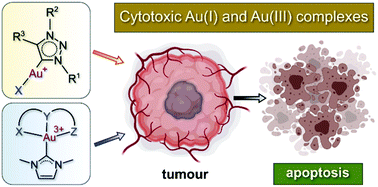Cancer molecular biology and strategies for the design of cytotoxic gold(i) and gold(iii) complexes: a tutorial review
Abstract
This tutorial review highlights key principles underpinning the design of selected metallodrugs to target specific biological macromolecules (DNA and proteins). The review commences with a descriptive overview of the eukaryotic cell cycle and the molecular biology of cancer, particularly apoptosis, which is provided as a necessary foundation for the discovery, design, and targeting of metal-based anticancer agents. Drugs which target DNA have been highlighted and clinically approved metallodrugs discussed. A brief history of the development of mainly gold-based metallodrugs is presented prior to addressing ligand systems for stabilizing and adding functionality to bio-active gold(I) and gold(III) complexes, particularly in the burgeoning field of anticancer metallodrugs. Concepts such as multi-modal and selective cytotoxic agents are covered where necessary for selected compounds. The emerging role of carbenes as the ligand system of choice to achieve these goals for gold-based metallodrug candidates is highlighted prior to closing the review with comments on some future directions that this research field might follow. The latter section ultimately emphasizes the importance of understanding the fate of metal complexes in cells to garner key mechanistic insights.

- This article is part of the themed collection: 2021 Frontier and Perspective articles


 Please wait while we load your content...
Please wait while we load your content...